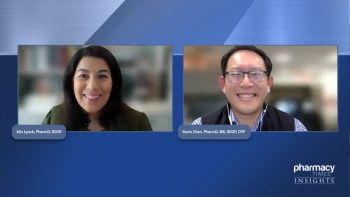
Reimbursement Rates for Prophylactic Treatments in Hemophilia A
Cost strategies impacting the treatment landscape in hemophilia, like reimbursement rates , are discussed by a medical expert .
Episodes in this series

Atta Chowdhry, RPh: The reimbursement rate depends on the insurance. Certain insurances have a very tight cap on the reimbursement rates and a very liberal reimbursement on the factor product. The cost of the factor varies between the extended half-life factor, the standard half-life factor, and then by specific antibodies. With the extended half-life factor, you end up infusing less units than a standard half-life factor. Instead of 3 times a week you infuse twice a week or once a week. Most of the manufacturers priced the extended half-life factor on the higher end because there was less usage of the product.
The standard half-life product has a regular reimbursement, which depends on the product cost. Because these are biologic products they get more expensive because of the cost of doing business for the pharma companies. Every year pharmacies increase the price of these drugs. On the other hand, the insurance companies, every year do more cost control, and they tighten up the reimbursement. So as a pharmacy, you are in the middle and you end up taking it from both ends. On the one hand, the cost of the product is going up and on the other, the reimbursement is going down, so it becomes a very tricky game.
And at this point, a lot of the insurance companies are using PBMs pharmacy benefit managers that are transferring some of the cost burdens to the patients if they don’t end up using their specialty pharmacy. So the patients’ choices are getting limited, and at the same time, the pharmacy reimbursement is getting tighter, so as a pharmacy you have to come up with some innovative things in order to make sure that you continue servicing your patients and servicing them in a way that is most compliant and efficient for the patient and at the same time put the least amount of burden on the health care system.
The reimbursement rate impacts the access to therapy if a patient is using a pharmacy for the last 15 years, and all of a sudden, the insurance company’s new contract where the reimbursement rate has been on the basis of a standard half-life factor product, which is older products, comes in. The reimbursement rate depends on AWP [average wholesale price] minus a certain percentage. And the newer products…come online with a higher cost, which is AWP minus for example, 5%. And your contract defines that you’re going to get reimbursed AWB minus 10%. You cannot take care of that patient on this better product because the contract will give you 5% less than your cost. And nobody can survive by servicing patients below their cost. So, at that point, the patient really had to make a choice to stick with the product, which is less effective in maintaining and taking care of the patient, than going to a better product because they’re priced differently.
I think that with the bispecific antibody coming in, it’s a totally different pricing structure because it’s not a factor product, so, it’s been priced differently. And factor products have a certain level of pricing structure. But then a lot of the insurance companies don’t understand when they’re doing the contracting that there’s a difference between the newer product, which is an extended half-life product, vs the older product. And the contracting is usually based on AWB minus a certain percentage. And some of the time, the insurance companies are making a deeper cut on the reimbursement side so it will work for an older product that you can service the patient, but on the newer product, because the way it’s been priced, the patient will not have access to that product.
Transcript edited for clarity.
Newsletter
Stay informed on drug updates, treatment guidelines, and pharmacy practice trends—subscribe to Pharmacy Times for weekly clinical insights.













































































































































































































